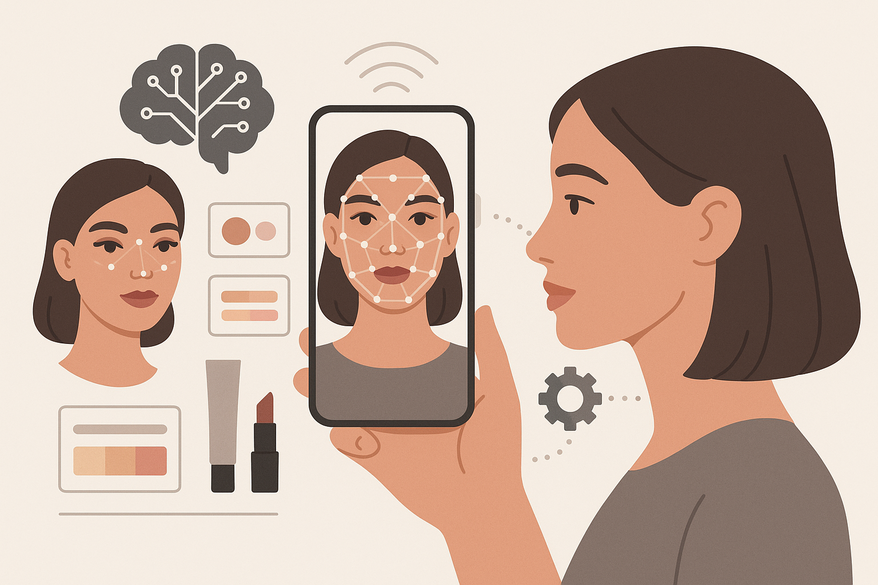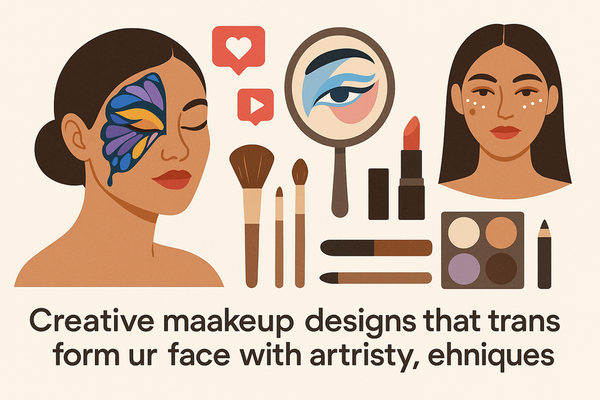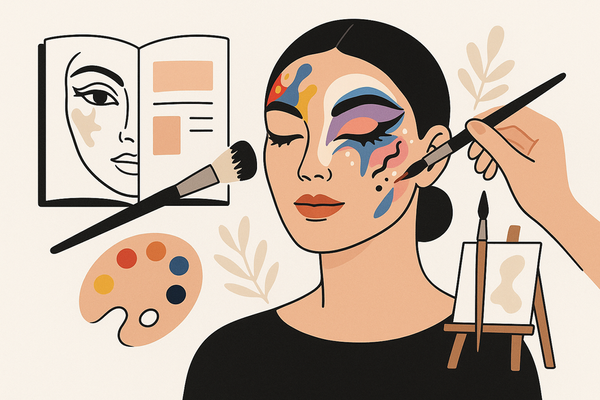How Virtual Makeup Consultation AI Is Revolutionizing Beauty Tech
Discover how virtual makeup consultation AI is transforming the beauty industry by offering personalized, data-driven experiences with machine learning and AR.

Estimated reading time: 6 minutes
Key Takeaways
- Virtual makeup consultation AI leverages machine learning, image processing, and AR to deliver personalized beauty recommendations.
- Users enjoy real-time, inclusive virtual try-ons from their devices, enhancing convenience and reducing returns.
- Brands gain data-driven insights for targeted marketing and improved engagement.
- Challenges include accuracy under varied conditions and privacy concerns when handling facial data.
- Future trends point to hyper-realistic AR effects and deeper e-commerce integration.
Table of Contents
- Introduction
- Background & Context: Virtual Makeup Consultation AI
- How Virtual Makeup Consultation AI Works
- Benefits & Advantages of Virtual Makeup Consultation AI
- Challenges & Considerations for Virtual Makeup Consultation AI
- Future Trends & Innovations in Virtual Makeup Consultation AI
- Conclusion
Introduction
Virtual makeup consultation AI refers to digital platforms using sophisticated algorithms and real-time imaging to provide personalized makeup advice and enable virtual try-ons. This article demystifies the technology—machine learning, image processing, and AR—that powers these consultations and showcases its cutting-edge applications. Readers will learn how these tools deliver realistic, inclusive, and data-driven beauty experiences right from their device camera. For insights on AI makeup coaching workflows, explore expert blogs.
Background & Context: Virtual Makeup Consultation AI
Definition of Virtual Makeup Consultation AI
These platforms leverage advanced computing to simulate makeup application, analyze facial features, and recommend products tailored to each user’s unique skin tone, texture, and style. This blend of computer vision, deep learning, and augmented reality transforms how people explore beauty options.
Evolution of Makeup Consultations
- In-person beauty-counter sessions where experts matched shades and taught techniques.
- Online quizzes with guided questions about skin type and preferences.
- Static image uploads that generated basic shade-matching suggestions.
- Interactive AR-driven simulations that overlay digital cosmetics on live video, offering mirror-like try-ons. For an in-depth exploration of AR try-ons, visit our specialist guide.
Growing Demand for Personalized Digital Beauty Experiences
Modern shoppers value convenience and crave custom solutions for their unique facial structures and complexions. The rise of remote lifestyles and mobile apps has accelerated the shift toward on-demand, AI-powered beauty tools that fit individual needs and schedules.
How Virtual Makeup Consultation AI Works
Core Technology Components
- Machine Learning: AI algorithms train on vast datasets of facial images, skin types, and product swatches. Over time, they refine shade-matching and style suggestions by recognizing patterns in user feedback and application outcomes.
- Image Processing: Real-time facial landmark detection maps over 100 points (eyes, lips, cheekbones). This ensures digital makeup aligns with each expression and head movement.
- Augmented Reality (AR): Live overlays of digital cosmetics on a video feed create a mirror-like try-on experience. Users see foundation, lipstick, or eyeshadow seamlessly applied as they move.
User Process Flow
- Face Scanning: Upon camera activation, the system captures and analyzes facial geometry within milliseconds.
- Virtual Makeup Application: Selection of lipstick, foundation, or complete looks triggers AI-driven rendering of realistic textures and hues.
- Real-time Adjustments: With every head tilt, smile, or lighting change, the software recalibrates placement and intensity to maintain accuracy.
- Personalization: Advanced solutions assess skin tone, texture, and undertones to recommend precise shades. Patented computer-vision foundation matching tailors suggestions to each user’s complexion.
Adaptation to Diversity
Leading platforms train on diverse datasets featuring a wide range of skin tones, ages, and facial structures. This inclusive approach ensures accurate recommendations and authentic virtual try-ons for all users.
Benefits & Advantages of Virtual Makeup Consultation AI
For Consumers
- Personalized Recommendations: AI curates product suggestions based on skin tone, facial geometry, style history, and even seasonality.
- Convenience: Try dozens of makeup items from anywhere—no need for physical testers or store visits.
- Safe Experimentation: Virtually preview bold colors or trending looks risk-free, reducing buyer’s remorse.
For Brands
- Enhanced Engagement: Interactive AI experiences boost time spent on apps or websites, increasing social shares and loyalty.
- Data-Driven Marketing: Brands collect preference data to power targeted promotions, personalized offers, and upsell campaigns.
- Reduced Return Rates: Accurate virtual previews translate to better purchase matches and fewer returns.
Industry Impact
- Improved Inclusivity: AI-driven shade-matching on diverse datasets leads to broader product ranges and representation.
- Innovation Acceleration: Insights from user interactions inform new product formulations, limited-edition launches, and campaign strategies.
Challenges & Considerations for Virtual Makeup Consultation AI
Accuracy & Reliability
Consistency in skin-tone matching can vary under different lighting conditions, camera resolutions, or image noise. Fine-tuning algorithms to work across device types remains an ongoing challenge.
Privacy & Data Security
Processing facial biometrics requires strong encryption, secure data storage, and explicit user consent. Ethical handling of sensitive images is critical to maintain trust.
Physical Realism Limitations
Digital renderings may not fully capture shimmer, texture, long-wear dynamics, or how products interact with real-world skin oils and lighting over time.
Future Trends & Innovations in Virtual Makeup Consultation AI
Advanced AR & AI Effects
Next-gen tools will offer hyper-realistic virtual swatches, microblending features, and dynamic lighting adaptation—mimicking studio setups.
Deeper E-commerce Integration
Seamless journeys from virtual try-on to one-click purchase, AI-curated beauty boxes, and subscription models will drive conversions and customer lifetime value.
Global Industry Impact
As emerging markets adopt mobile-first beauty solutions, personalized AI-driven experiences will scale, making advanced makeup consultations accessible worldwide.
Conclusion
Virtual makeup consultation AI blends machine learning, image processing, and augmented reality to transform beauty consultations. These platforms deliver unmatched convenience, personalization, and inclusivity for consumers while offering brands data-driven insights, increased engagement, and lower return rates. Embracing leading virtual makeup consultation AI tools lets you experience the future of beauty tech firsthand—try them today and discover your perfect match.
Platforms like Makeup Check AI illustrate how real-time AI analysis and AR overlays can guide color selection and technique adjustments seamlessly. Users can follow in-app prompts and instant feedback to achieve professional-grade looks.
FAQ
-
What is virtual makeup consultation AI?
It’s a technology that uses machine learning, image processing, and augmented reality to simulate makeup application and offer personalized product recommendations.
-
How accurate are the shade-matching recommendations?
Accuracy depends on lighting, camera quality, and algorithm training data. Leading platforms continuously refine models to improve reliability across diverse conditions.
-
Is my facial data secure?
Reputable solutions implement strong encryption, secure storage, and require explicit user consent to protect sensitive biometric information.
-
Can I use these tools on any device?
Most mobile and desktop cameras are supported, but performance may vary by device resolution and processing power.
-
Are virtual results identical to real-world application?
While highly realistic, digital renderings may not fully capture texture, longevity, or lighting interactions. Always test physical products if possible.




